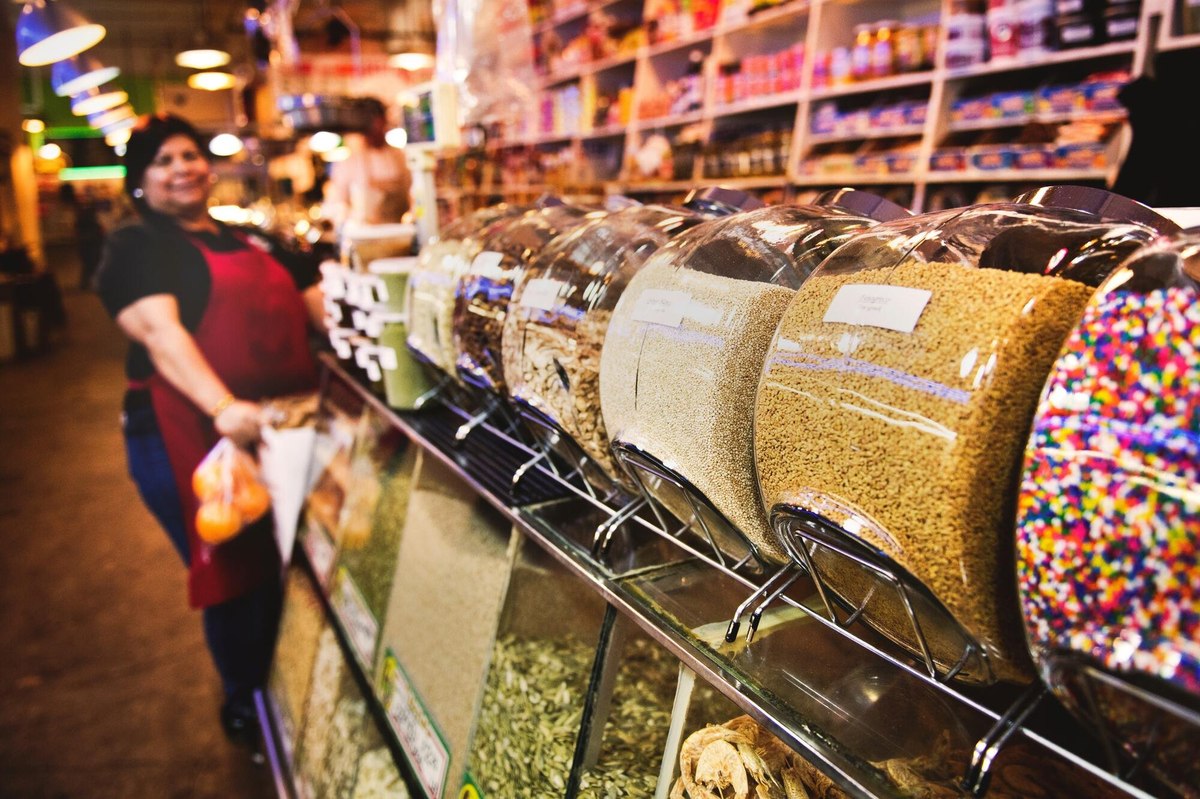
The YouGov Cost of Living Segmentation
New cutting edge research shows how the crisis affects five distinct groups of the British population
The cost of living crisis continues to severely impact Britain, putting financial pressure on many individuals, families, and communities. But the crisis affects different groups in different ways, with some in particular struggling tremendously to make ends meet.
Now, new YouGov research with data collected from over 11,000 people across the country provides unparalleled insights into the differing impacts of the crisis by establishing five distinct population segments, each with a unique experience and viewpoint on the cost of living crisis.
The five groups range from those for whom the cost of living crisis has not had too much of an impact on their day-to-day lives to those who are struggling to make ends meet on a daily basis. They illustrate and bring to life the way in which different people across all regions, backgrounds, and financial situations in the country experience and deal with the rising cost of food, fuel, housing, and energy bills.
Our unique population segments are derived from a machine-learning clustering algorithm run on responses to a short survey fielded by YouGov over December and January. The model is not fed any information about things like income levels, savings, or any background socio-demographic information. The 'golden questions' which the model uses to estimate the groups cover a range of topics, including making cuts to spending, affordability of things like energy bills and luxury items, personal views on household finances, and the future of the British economy.
From robust statistical analysis of question answers, the model identified five clusters: Worried and Suffering, Cautiously Hopeful Strugglers, Squeezed but Coping, Unsettled Withstanders, and Calm and Comfortable.
Worried and Suffering
Around 1 in 5 of the British publicThese are the ones hit hardest by the cost-of-living situation, sitting at the extreme end of the struggle and worry. They’ve made cuts to their spending and are still struggling to cover their food costs and bills. They’re very worried about the coming years and their financial position, employment and housing. They are most likely to be in part-time work or unemployed and have a low average household income.
Cautiously Hopeful Strugglers
Around 1 in 7 of the British publicThis segment are feeling the pinch of the cost-of-living situation, being likely to have had to made cuts and struggled so far. However, they have the most positive outlook towards the UK economy and their own personal finances going forward. This the youngest segment, with the highest number of students.
Squeezed but Coping
Around 1 in 4 of the British publicThis segment represent ‘the middle of the road’ on most metrics. They are certainly feeling the effects of the cost-of-living situation but seem to be managing so far. This group are making necessary cuts to their spending but are unlikely to be struggling to afford essentials like food and bills. They tend to be middle aged and own their own home.
Unsettled Withstanders
Around 1 in 5 of the British publicPeople in this group make up one of two segments who have not really felt the financial impact of the cost-of-living situation yet but are very worried for the coming months – particularly outwardly for the UK as whole. They have not made too many cuts, nor are they struggling to pay bills. They are likely to be highly educated, with a well-paid job, and have discretionary spending and savings to fall back on.
Calm and Comfortable
Around 1 in 5 of the British publicThis group of people are the least affected by the cost-of-living situation and are optimistic that they will continue to be relatively unaffected in the coming years. They are the least likely to have needed to make cuts yet, and most don’t expect to need to. Their finances are unlikely to have taken a hit so far and they’re confident they’ll be able to manage going forward. There are high numbers of retirees in this group, and many own their home outright.
Our five cost of living population segments show just how differently the crisis affects different people. For many property-owning, well-pensioned retirees, the crisis is much less of an issue than it is for those who are still renting in their late 20s and 30s, or for those in precarious (or non-existent) employment situations.
Just under half of the Calm and Comfortable group have not yet had to make any changes to their spending whatsoever. On the other hand, over nine in ten of the Worried and Suffering group have already made significant spending cuts, and fully expect to have to make more in the future.
Likewise, while around three-quarters of the Worried and Suffering group have struggled to pay their energy bills over recent months, around nine in ten of the Calm and Comfortable have had no such issues at all. Around one-third of the Cautiously Hopeful Strugglers have had problems, but only a handful of the Squeezed but Coping or the Unsettled Withstanders have felt the same pinch.
Much of the way in which our groups tend to view and experience the cost of living crisis comes down to the assets they have at their disposal with which to help deal with ongoing financial pressures.
Home ownership is one such metric we can examine to make this point. Likelihood of owning your own home (either with a mortgage or outright) is a sliding scale down the segments. Among the Worried and Suffering it stands at just about half, and around six in ten for the Cautiously Hopeful Strugglers. Around three-quarters of both the Squeezed but Coping and Unsettled withstanders are homeowners, and that figure rises to around eight in ten for the Calm and Comfortable. We see similar trends across the groups for other metrics like discretionary spending and household or personal savings.
Another example is household income. Among the Worried and Suffering the average household income is relatively very low. Around two in five have a yearly income of £20,000 or less, and around third have incomes of between £20,000-£39,000. Despite their relatively high comparative levels of calmness and optimism, household income figures are similar in the Cautiously Hopeful Strugglers.
The Squeezed but Coping group have higher household incomes on average than the former two groups, with one-third registering incomes of between £20,000-£39,000, another quarter with incomes of between £40,000-£60,000, and a further quarter with incomes above £60,000. This is a similar pattern of income to the Calm and Comfortable group.
Household income is highest among the Unsettled Withstanders. Around one-third take home £60,000+ on average per year, and another quarter bring in between £40,000-£60,000.
Segments vary on life satisfaction...
On 30-31 January 2023 we fielded two questions to our segments and studied their responses across the groups. The first concerned overall life satisfaction, asking “In general, how satisfied or dissatisfied would you say you are with your life at the moment?”. Life satisfaction question items are designed to gauge an individual's overall feeling about their life as a whole, as a broad concept, allowing us to measure general perceptions and emotions beyond more short-term responses.
According to the data, the Calm and Comfortable are the most satisfied with their life as it is, with over four-in-five (82%) holding this view - including 22% being ‘very satisfied’. Just 1% of this group are ‘very dissatisfied’ with their life. The Unsettled Withstanders show similarly high levels of life satisfaction with over three quarters (78%) telling us they are satisfied with their life.
However, the Unsettled Withstanders are generally characterised by higher levels of worry about the cost of living crisis than those in the Calm and Comfortable. In similar vein, the former are more likely to be dissatisfied with their life right now than the latter (by 19% to 10%).
Most of those among the Cautiously Hopeful Strugglers and the Squeezed but Coping are also satisfied with life, albeit to a lesser degree than the Unsettled Withstanders and Calm and Comfortable. Around two-thirds of each feel satisfied with their lives (66% and 64% respectively).
People in our Worried and Suffering segment are by far the most dissatisfied with their life of all groups. Two-thirds say they are either fairly (37%) or very dissatisfied (26%). Just 3% say they are ‘very satisfied’.
...and support for more government intervention
We also explored how our groups currently view the amount of government action being taken to address the cost of living crisis. We asked each of our respondents which of the following two statements came closest to their view, that “the government should be doing more”, or “the government are doing all they reasonably can” to help people through the situation.
Unsurprisingly, the Worried and Suffering are most likely to think the government ought to be doing more, with nearly nine in ten (88%) saying so. Those in the Squeezed but Coping group are of a similar disposition, with over eight in ten (83%) saying more needs to be done.
On the other side of the spectrum, we see comparatively higher levels of satisfaction with current levels of government action among the Calm and Comfortable. Just over one-third (37%) of them say the government needs to be doing more, while nearly half (46%) think the government is already doing everything they reasonably can.
The Cautiously Hopeful Strugglers and the Unsettled Withstanders share similar opinions on the government's response, despite their very different financial situations: 63% of the former and 68% of the latter say that the government should be doing more to help people through the cost of living situation. Around a quarter of both groups say the government is doing everything they reasonably can (25% and 23% respectively).
Looking ahead
The cost of living crisis is widespread and indiscriminate but affects different people to very different degrees. The YouGov cost of living segmentation model is the first of its kind, using survey data and advanced statistical methods to draw together five distinct groups to help us narrate and understand the crisis and how it impacts the population.
For some, the crisis is a passing moment with little to no consequences. For others, it has created a daily struggle from which many are struggling to escape. Others may not be feeling the pinch now, but are anxious about the future, while others are cutting and managing to varying degrees and with varying degrees of hope and optimism about what the next few months entails.
A full and proper account of how different groups are experiencing the crisis in different ways will allow for a much more thorough understanding of the British population as it navigates the challenges of inflation and rising costs, and allow researchers and policymakers to form a much better comprehension of how different interventions and ideas may benefit specific target groups of the British population.
Throughout February, YouGov will be releasing more research on our five segments and will provide details on how clients can include them in their survey research.
YouGov Audience Data – Active this audience now
Contact us to stay in touch and find out how you can use our Cost of Living Segments
Contact the Political Research team
Technical notes
To generate our Cost of Living Segments, respondents are asked a short series of 'golden questions' and then allocated into five population segments based on their responses. The segments are determined from analysis of an almost 12,000 person survey carried out from December 2022 to January 2023. The model is not fed any information about things like income levels, savings, or any background socio-demographic information. Using only the golden questions, an unsupervised machine learning cluster analysis model called ‘k-means’, using the Hartigan-Wong approach, identified segments as defined above. YouGov are able to provide Cost of Living segment membership for every respondent in a survey.
































